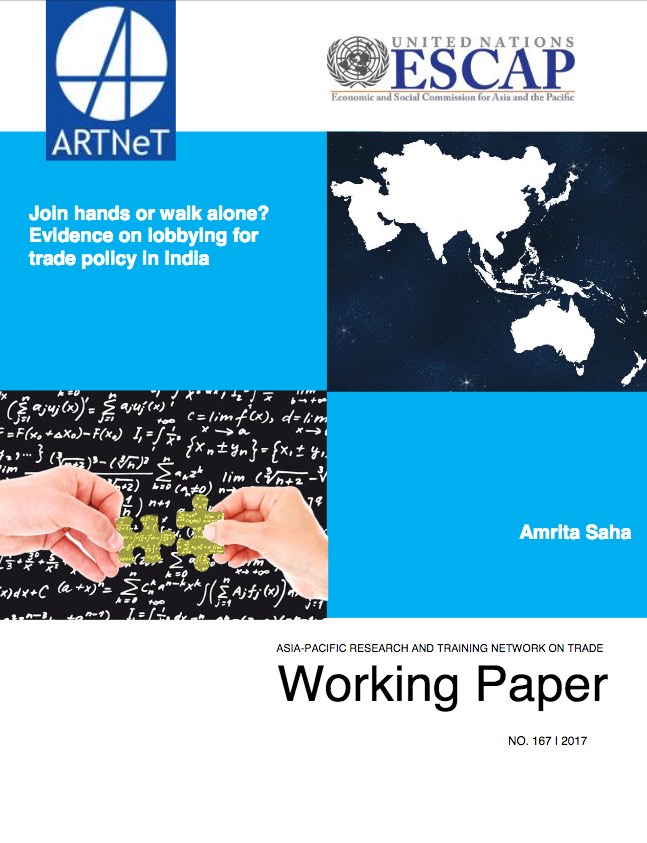Join hands or walk alone? Evidence on lobbying for trade policy in India

Using primary evidence for 146 Indian manufacturing firms, I examine the types of lobbying strategies(lobbying defined as attempts to communicate information to political actors) for trade policy influence and what drives firm choice for these strategies. Firm scan lobby collectively in a group (Join Hands), lobby individually as a single firm (WalkAlone), or adopt a ‘DualStrategy’ that is a unique combination of collective and individual lobbying. The findings are a first for India, and suggest the following: First, Indian manufacturing firms join hands (lobby using a collective strategy) when targeting sector-wide outcomes in the nature of public goods; firms join hands while walking alone (dual strategy) when targeting product-specific outcomes.Second, the likelihood of adopting a dual lobbying strategy is higher in sectors that are characterized by low concentration (dispersion is higher) such that firms increase their chances of trade policy influence. This suggests a strong competition effect(driving cooperation and individual lobbying) over any free-riding that drives firm strategy to lobby for trade policy influence in India. Finally, availability of resources and lobbying time are significant drivers for the type of strategy undertaken.
